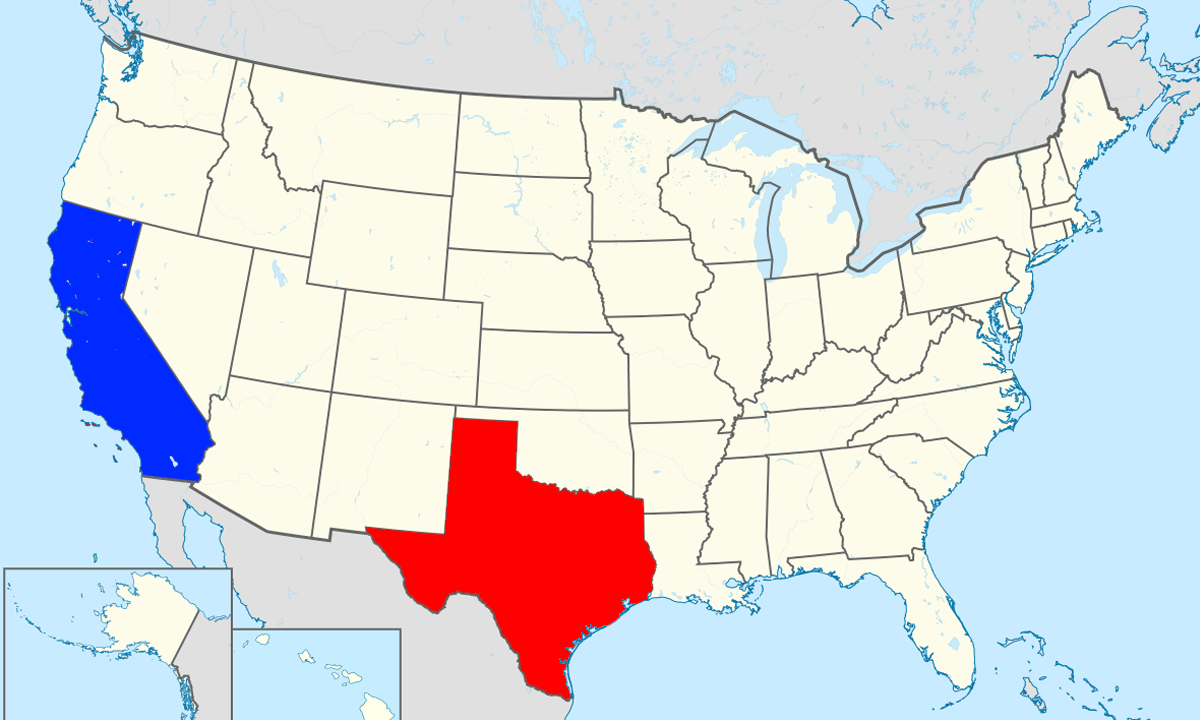Written by Miguel Palacios
The two largest states in the United States have taken different approaches in addressing covid-19 and vaccinations. Texas has taken a “hands-off” approach to this pandemic, leaving businesses open and not mandating mask utilization. California was the exact opposite, implementing the most restrictive quarantine measures within the nation’s history, shutting down schools, stores, and restaurants. The information provided by Anna Almendrala and Sandy West of Kaiser Health News gives an insight into how these methods have affected each of the state’s populations.
Texas is known for being the largest state in land area in the United States. It’s also known for being a Republican majority state. Like California, with its proximity to the Mexican border, Texas has a large Hispanic population. Last year, when the pandemic hit the US, many of the states decided which regulations and rules they would implement. Texas Governor Abbott decided to let his constituents make their own choices. No lockdown was imposed, and masks were not mandated until later in July when the state saw a large surge in covid cases. Texas officials emphasized their residents’ individual rights and a healthy economy.
California was once a red state like Texas, but things have changed a lot since then and it has become firmly blue. With Governor Newsom’s heavy pandemic restrictions, people were mandated to stay home and only leave for essential reasons. As a result, many businesses closed their doors and would never open them again. Students of all ages studied from home, but the standard of education was not the same. People lost their jobs, and though Newsom passed an emergency mandate to prevent homeowners and renters from losing their homes or having utilities shut off due to inability to pay, it didn’t stop the problem. In most cases, rent, mortgages, and bills are accruing to astronomical amounts for people who have not been able to pay them. Nevertheless, at one point, California had a dangerously high record of covid infections, meaning that the lockdown implemented by Newsom was not working as he intended.
As the vaccines rolled out, California officials devised a plan for how they would be distributed, constructing a tier program. The first to be vaccinated were those who were deemed at higher risk. This included healthcare workers, and residents of nursing homes, which are predominantly White. Texas did the same thing, however, it began to allow individuals with underlying conditions like type 2 diabetes, sickle-cell anemia, and obesity, to also get vaccinated by December 29th, 2020. California did not expand its eligibility to include these individuals until later in March, and even then, California’s list of necessary underlying conditions to be eligible was much more restrictive than that of Texas.
In California, officials decided in January to include the elderly for eligibility to be vaccinated. According to Anna Almendrala and Sandy West of Kaiser Health News, individuals 65 and older were at a substantially lower risk of contracting covid-19 than younger people of color. Elizabeth Wrigley-Field, assistant professor of sociology at the University of Minnesota, states that age-based eligibility benefits older, white populations over the younger minority population who is at a much higher risk of contracting covid-19, and having to be hospitalized and even dying. According to a University of Southern California study, Hispanics aged 20-54 were 8.5 times more likely to die of covid than whites of the same age from March to July.
Though California claims that their approach was based on science and social equity, it hindered their reach to those of minority heritage, especially Latinos. Their approach did not help their numbers in comparison to Texas, which did not implement drastic measures or restrictive vaccine schedules. In both Texas and California, Hispanics make up about 40% of the population. As of April 12th, 22% of Hispanics in California have been fully vaccinated. In Texas, 21%. According to the Centers for Disease Control and Prevention states that Texas has, in general, done much better than California in vaccinating people of color.
The main point is that even with Newsom’s overly restrictive measures, Californians didn’t gain any more protection or benefit over states, like Texas, that did not implement such harsh restrictions.




